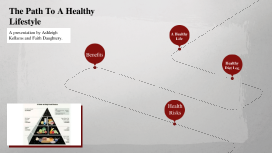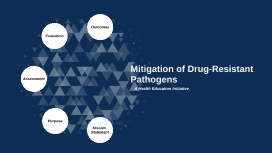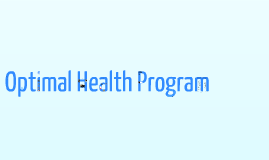Health Program
Transcript: Optimal Health Program Diet Healthy, balanced meals increase your energy and also provides your body with nutrients. The benefits of a good diet are the reduced risk of strokes, cardiovascular diseases and type 2 diabetes. 14,000 Canadians die from stroke and 74,000 Canadians die from cardiovascular disease each year. Also, there are 60,000 new diagnoses of type 2 diabetes every year (Canadian Heart & Stroke Foundation 2011, CBC News 2010). Healthy Meals and proper porportions for an older adult Inclued... 7 servings of fruits and vegetables 7 Servings of Grain Products 3 Servings of Milk or Alternatives 3 Servings of Meat and Alternatives For Example... Exercising can also decrease the chances of an older adult developing age related diseases such as high blood pressure, heart disease, arthritis and type 2 diabetes (American Academy of Family Physicians) Another area to focus on when regaining or maintaining optimal health is the environment in which the individual lives in and their habits. "Once a toxic substance has contacted the body it may have either acute (immediate) or chronic (long term) effects" (Human Resources and Equity / University of Toronto). For instance, smoking cigarettes contains the mixture of nicotine and carbon monoxide and every time you smoke, you temporarily increases your heart rate and blood pressure, straining your heart and blood vessels. By slowing down your blood flow, you are at a greater risk of stroke and heart attacks (Johnson 2011). Eventually tar coats the smoker's lungs, resulting in a great risk of developing lung cancer. A healthy living environment cannot be in an area with high dosages of radiation either. Cell phones and cell phone towers communicate using radiofrequency which is part of the electromagnetic spectrum, including microwave radiation, visible light and X-rays radiation. "The health problems that have been linked in one way or another include Attention Deficit Disorders, Aging, Alzheimer’s, Autism, Aspergers, changes in blood, passing the blood brain barrier with toxins, changes in blood pressure, brain cancer, breast cancer, other kinds of cancers, cataracts, chances in cells, chromosomal damage, dizziness, changes in DNA, earaches, changes in EEG, all kinds of reactions in people who have electromagnetic sensitivity, eye cancer, fatigue, changes in genes, headaches, weakness in the heart, heat effects, moving heavy metals into the brain, issues with the immune system, leukemia, lymphoma, MCS, memory loss, miscarriages, effects on nerves, neuromas, adn neurons, development of oncogenes, pressure, risk of disease in general, various sensations, effects on signaling enzymes, stress, sweat, tumors, and changes in vision" (Moon 2009). Opitmal Health Program The first area I would focus on when creating an optimal health program is the intake of nutrition and proper amount of servings of all the food groups to create balanced healthy meals. Following Canada's Food Guide. Then, two and a half hours of aerobic exercise and strength training twice a week. Finally, living in a safe environment with low toxic chemicals and low levels of radiation. The recommended amount of aerobic exercise is two and a half hours weekly, followed by 2 days a week of strength training (Centers for Disease Control and Prevention). Naturally as the body ages, bones and muscle tissue start to break down. Therefore, activities such as aerobic exercises strengthen muscles and bones at the same time. Environment Exercise

















